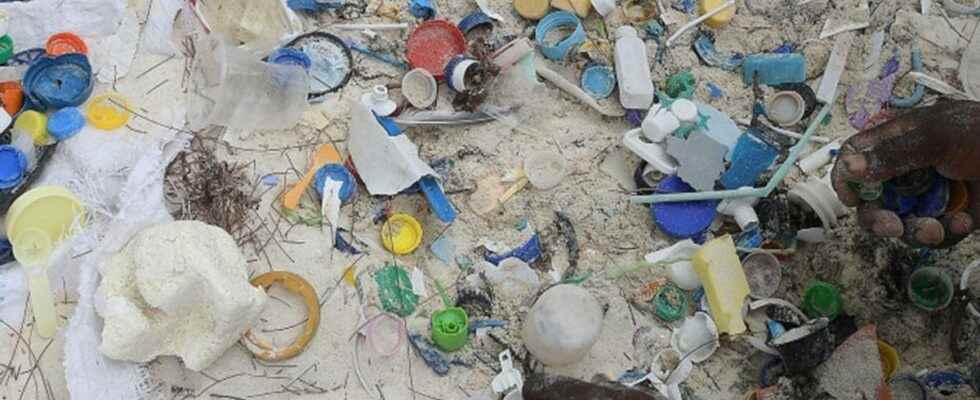Published on
Updated
Reading 3 mins.
Sometimes called “mermaid’s tears”, plastic micro-beads have swept the French coast en masse in recent weeks. Far from being unprecedented, this phenomenon has existed quietly since the 1970s and sometimes reaches catastrophic proportions.
Between 17,000 and 167,000 tons! This is the quantity of plastic micro-beads that escape into European nature each year, according to an estimate made for the European Commission in 2018.
On the French coasts, “we find them since the 70s”underlines Nicolas Tamic, assistant to the director of the Center for documentation, research and experiments on accidental water pollution (Cedre), based in Brest.
Used as a raw material by industry, these “industrial plastic granules” or GPI are packaged in 25-kilo bags (containing one million beads each) and are used in the manufacture of most plastic objects, from car bumpers to salad bowl car.
These pellets are often ingested by marine animals and can therefore end up in human food.
They represent the second source of microplastic pollution on French beaches, according to Cedre, which provides regular monitoring on all French coastlines. “On the beaches we follow, we find 1,100 GPI for 100 meters of beach”excluding accidental pollution, says Kevin Tallec, environmental engineer at Cedre.
“Every winter in Brittany, we see more plastic waste than usual because there are storms and more mixing in the ocean, which means that we have more arrivals on the beaches”he explains.
Leaks can occur at any time in the production process: from the production of pellets to their transformation into plastic objects, including transport and recycling.
But the most impressive pollution usually occurs when a container falls into the sea.
Massive pollution in Sri Lanka
In Sri Lanka, the sinking of the container ship MV X-Press Pearl in June 2021, off Colombo, had released 75 billion plastic pellets, a large part of which washed up on the coast.
“On some beaches there were more than two meters of GPI”, describes Mr. Tallec. Dead bodies of dolphins, whales and turtles had washed up en masse on the beaches and the pollution had affected 80 km of coastline as well as fishing areas.
In Durban, South Africa, two containers, loaded with 50 tonnes of pellets, fell into the sea following a storm in November 2017. Lighter, the containers of pellets are often placed above the stack on the boats and therefore fall first.
“For two years, the South Africans cleaned the coasts over 300 km. Of the 50 tons that fell into the sea, they recovered 35 tons”explains Mr. Tallec. “All the countries in the world that have faced this type of pollution have shown that it is impossible to recover all the fallen GPIs.”
On the French coasts, the pollution began in November and pellets were found from the tip of Finistère to Vendée. Although their characteristics are similar, Cedre has not been able to determine their exact origin.
“The fall of a container seems to us the most probable hypothesis”however, advances Antidia Citores, spokesperson for the Surfrider Foundation, which pleads for a “international reporting obligation” in case of container loss.
A proposal taken up by the Secretary of State for the Sea Hervé Berville, who announced on Tuesday “having launched on behalf of France a request to make the loss of containers by ships a priority area of work for the International Maritime Organization ( IMO)”.
For the NGO Fauna & Flora International, the IMO must also classify “pellets as marine pollutants”. “This would immediately trigger significant improvements in the way pellets are packaged, labelled, stored and transported around the world”estimated Tanya Cox, specialist in marine plastics for the association.
“The main measure is above all the reduction of plastic production”adds Ms. Citores.
